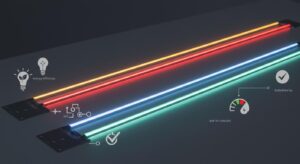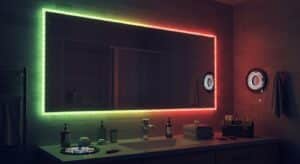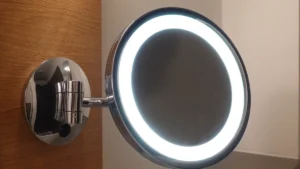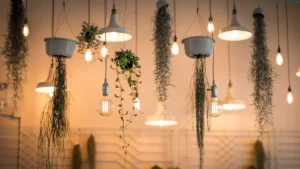
LED strip lights with remotes are easy-to-use lighting options. They are thin strips with sticky backs and small LEDs. You can use a remote to change brightness and colours. This helps you set the right mood for your room.
These lights are becoming very popular. In 2021, North America made USD 16 billion from LED sales. Europe earned USD 11 billion in 2022. Asia-Pacific is the top seller, making over 40% of sales. This shows people prefer energy-saving and flexible lighting choices.
Key Takeaways
LED strip lights are flexible and simple to use. You can adjust brightness and colours using a remote.
Pick the right remote: Infrared is basic, Bluetooth works with phones, and Wi-Fi connects to smart homes.
LED strip lights use less energy and lower electricity costs. They are a green option for lighting.
Install them properly. Get the right tools and follow safety rules for a good setup.
Think about what you need. Check brightness, colour choices, and if they work with smart home systems.
Features of LED strip lights
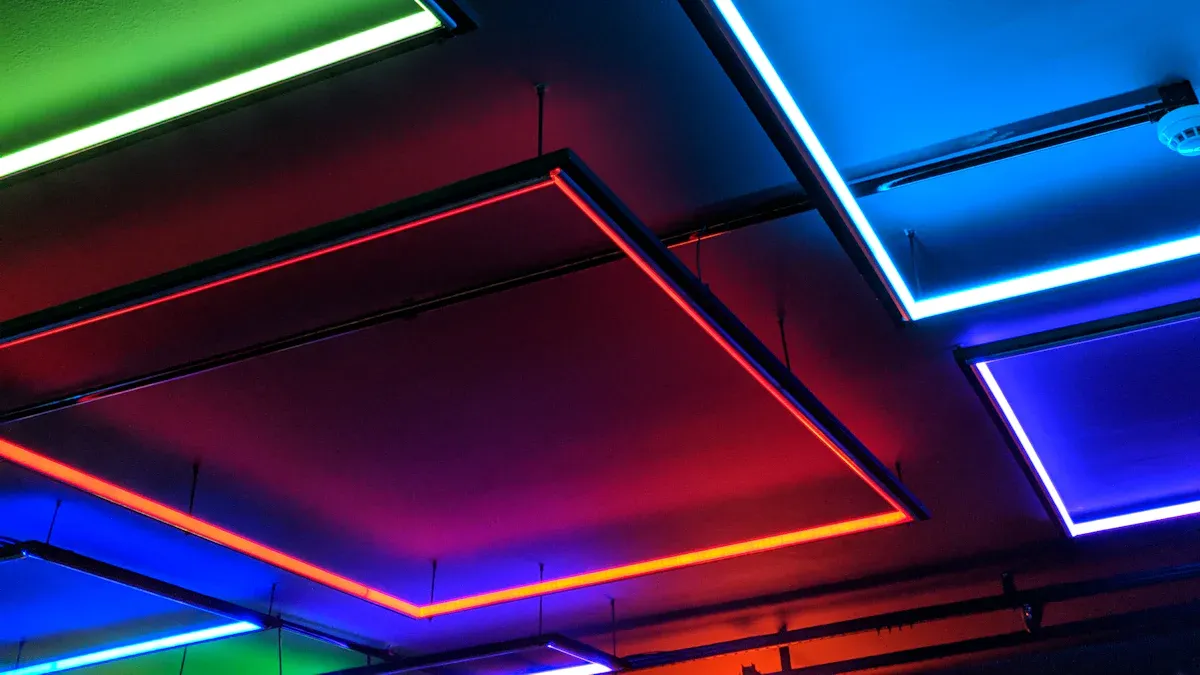
Types of remotes (infrared, Bluetooth, Wi-Fi-enabled)
LED strip lights have different remotes, each with special uses. Infrared (IR) remotes are the easiest to use. They need a clear view of the LED strip’s receiver. Bluetooth remotes connect to your phone or tablet. They save energy and work without Wi-Fi. Wi-Fi-enabled remotes are the most advanced. They work with smart home systems. You can control lights using voice or automation.
Tip: Choose Bluetooth remotes if you want easy control without Wi-Fi.
Common functionalities (brightness control, colour changing, modes)
LED strip lights have many features to match your needs. You can dim or brighten them to set the mood. For example, dim lights are great for relaxing, while bright lights help with tasks. Many LED strips let you change colours, from soft tones to bright shades. You can also try fun modes like flashing, fading, or strobing.
Brightness Level | Lumens per Foot |
|---|---|
Low Accent Lighting | 80-100 |
Bright Accents/Low Ambient | 150-300 |
Medium Ambient/Medium Task | 300-400 |
Ambient and Task Lighting | 350-500 |
High-Brightness Task Lighting | 700+ |
Advanced features (timers, music sync, app integration)
Extra features make LED strip lights more useful. Timers let you set when lights turn on or off. This saves energy and is convenient. Music sync makes lights move to your favourite songs. It’s perfect for parties. App integration gives you full control. Use your phone to adjust settings, group lights, or automate them.
Feature | Description |
|---|---|
Scheduling | Set timers to turn lights on or off automatically. |
Music Sync | Lights change with the beat of your favourite songs. |
APP control | Use an app to manage lights and group settings. |
Note: If you love smart homes, Wi-Fi-enabled remotes with apps are ideal.
Benefits of LED strip lights with remotes
Convenience and ease of use
LED strip lights with remotes are very simple to use. You can change brightness, colours, and modes from your seat. Some systems let you control many strips with one remote. For example, Zigbee or Wi-Fi systems allow easy control in multiple rooms. Zigbee also uses less power and works well for grouped lights.
A user shared how they changed their living room lights from bed. Using a Wi-Fi remote, they adjusted brightness, colours, and set schedules. This shows how useful these systems are in daily life.
Energy efficiency and cost savings
LED strip lights save energy and lower electricity bills. They use much less power than old incandescent bulbs. The table below shows how much you can save:
Description | Incandescent Bulb | LED Bulb | Savings per Bulb |
|---|---|---|---|
Monthly Energy Cost | £1.17 | £0.195 | £0.975 |
Yearly Energy Consumption | 108 kWh | 18 kWh | |
Yearly Energy Cost | £14.04 | £2.34 | £11.70 |
Household Monthly Savings | £19.50 (20 bulbs) | ||
Household Yearly Savings | £234 (20 bulbs) |
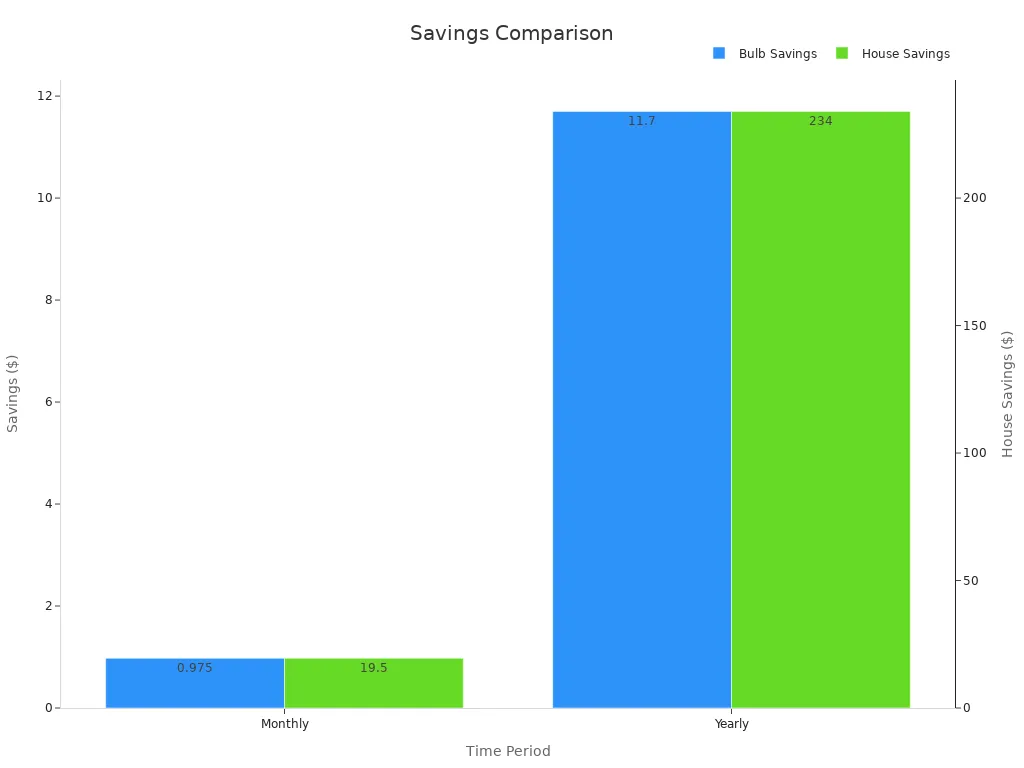
Switching to LED lights cuts energy use and saves money. It also helps the environment by reducing your carbon footprint.
Versatility in lighting design and ambience
LED strip lights are great for creating the right mood. You can use them to decorate your home, make events special, or highlight building features. The table below shows how they can be used:
Application Type | Description |
|---|---|
Home Lighting | Makes living spaces cosy and festive with personal touches. |
Special Events | Adds fun lighting for parties, Christmas, or concerts. |
Architectural Lighting | Lights up buildings beautifully with cool effects. |
These lights can change any space. Soft colours make a calm vibe, while bright ones are great for parties. They work well for both daily use and special events.
Installing LED strip lights with remotes
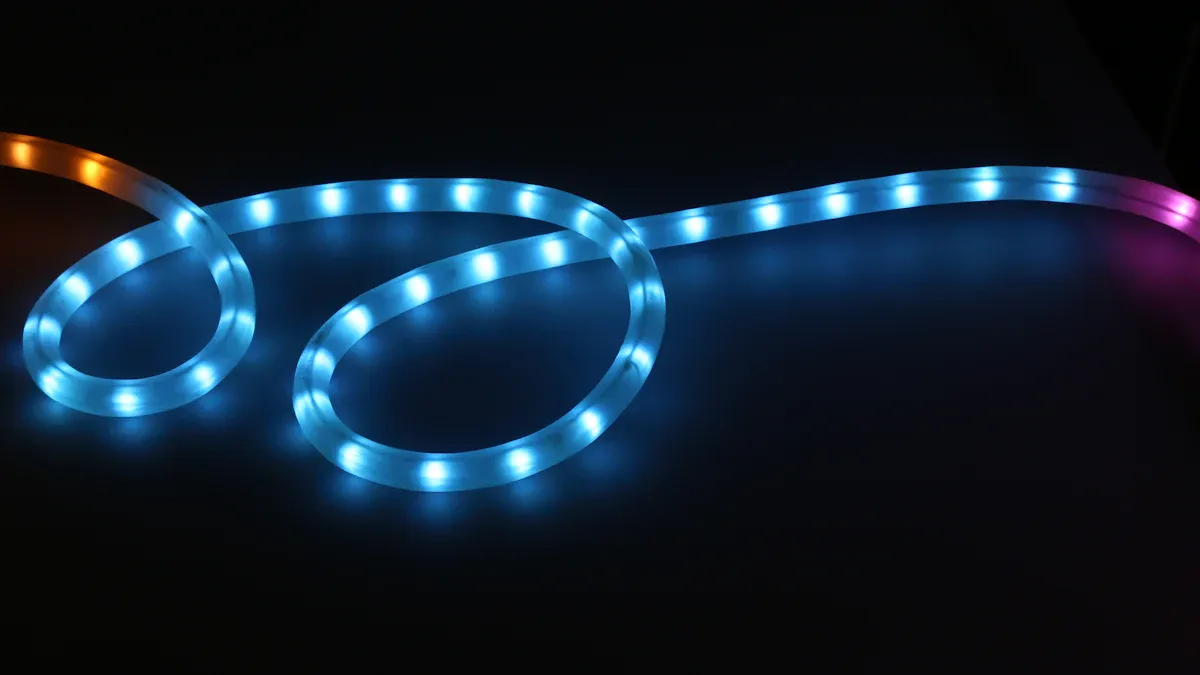
Tools and materials needed
To set up LED strip lights, gather some basic tools. You’ll need a screwdriver, measuring tape, and a ladder for high spots. If drilling is required, a drill will be helpful. Most LED kits include 3M adhesive tape, nails, and cable buckles to secure the strips.
Safety is very important when installing. Always turn off the power before starting. Use a sturdy ladder for high areas and wear gloves to protect your hands. Keep your workspace dry to avoid electric shocks. A good-quality power supply is also necessary. It stops voltage issues that could harm the LED strip. Make sure the strip uses less than 80% of the power supply’s maximum capacity for smooth operation.
Step-by-step guide for installation
Here’s how to install your LED strip lights:
Measure the area where you’ll place the lights. Cut the strip at marked points to fit.
Connect the strip to the power source using low-voltage wires.
Join multiple strips with solderless connectors if needed.
Test the lights to check they work before sticking them.
Unroll the strip, peel off the backing, and stick it to the surface.
Use clips or cable buckles for extra support on uneven areas.
Attach the strip to the controller and power adapter, then plug it in.
For wet areas like bathrooms, use waterproof LED strips. Always read the manufacturer’s guide for troubleshooting and updates.
Tips for best placement and securing
Placing your LED strips correctly improves their look and use. Put them under beds, along headboards, or around ceilings for a soft glow. For brighter lighting, pick strips with up to 2400 lumens per metre.
Use dimmable strips to adjust brightness and set the mood. On rough surfaces, mounting clips can help them stick better. Ensure the strips stay bright and keep their colour over time. For cove lighting, position strips to avoid glare and spread light evenly.
Tip: Always cut strips at marked lines to avoid damage and ensure they work properly.
Choosing the right LED strip lights
Purpose and location considerations
Think about where and why you need LED strip lights. Different places need different features. For example:
Homes often need warm lights to feel cosy.
Shops or offices may need bright, cool lights for clarity.
Outdoor or bathroom areas need waterproof strips to handle water.
Also, think about how you’ll use them. Under-cabinet lights are great for kitchens. Backlighting works well for TVs or mirrors. For accent lighting, pick strips that change colours. Many people like remotes for easy control. You can adjust brightness or colours to match your mood.
Tip: Check if the lights will face water or dust before buying.
Length, brightness, and colour options
Choose LED strips based on their technical details. Use this table to help:
Factor | Description |
|---|---|
Brightness (Lumens) | At least 450 lumens per foot gives good light. |
LED Density | More LEDs per foot (e.g., 36) spreads light evenly. |
Power Draw | Strips with 4 watts per foot or more work better. |
Colour Temperature (CCT) | Warm tones are relaxing; cool tones help you focus. |
Colour Rendering Index (CRI) | Higher CRI makes colours look natural and clear. |
Note: Measure the area carefully to pick the right strip length.
Compatibility with smart home systems
If you use smart home devices, check if the strips work with them. Controllers are important for this. Some only work with certain types of strips. Advanced controllers have Wi-Fi or Bluetooth. These let you use voice commands or apps to control lights.
Match the controller to your strip’s needs. For example, 5-pin connectors are needed for smart features. Many people like smart controllers for music sync and automation. These features make using the lights more fun and easy.
Tip: Make sure the controller works with Alexa or Google Home for smooth use.
LED strip lights are both useful and stylish. They let you adjust brightness, change colours, and even sync with music. These lights are simple to use and save energy, making them a smart choice. You can use them to set the right mood for daily life or events. Think about what you need, like where to place them, how bright they should be, or if they work with smart devices. This helps you pick the best lights for your home or office.
FAQ
How long do LED strip lights last?
LED strip lights can work for 20,000 to 50,000 hours. Their lifespan depends on the product’s quality and how you use them. Install them properly and avoid overheating to make them last longer.
Can LED strip lights be cut to fit smaller areas?
Yes, you can cut LED strips at marked spots. These marks are usually a few inches apart. Always read the manufacturer’s instructions to cut safely and avoid damage.
Are LED strip lights safe?
LED strip lights are safe if installed the right way. They don’t get very hot and use low voltage. For wet places, pick waterproof strips. Follow safety rules, like turning off power before installing.
Can LED strip lights be used outside?
Yes, some LED strip lights are made for outdoor use. Choose waterproof or weatherproof ones with an IP65 rating or higher. These protect the lights from rain, dust, and other outdoor conditions.
How can one remote control many LED strips?
You can control several strips with one remote using a matching controller. Systems like Zigbee or Wi-Fi remotes let you group and manage multiple strips. Make sure all strips work with the same controller.
See Also
Understanding The Functionality Of Cob Led Strips
Effective Installation Techniques For RGB LED Strip Lights
Adjustable Brightness Options For Cob Led Strips
The Role Of LED Strip Lights In Humanoid Robotics
Selecting The Perfect LED Strip Lights For Linear Lighting
